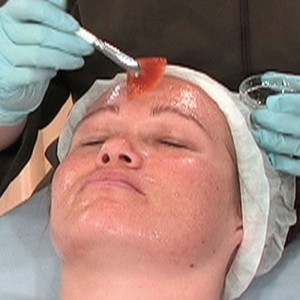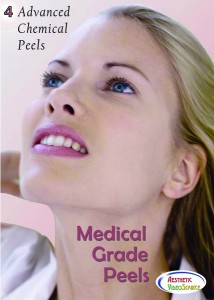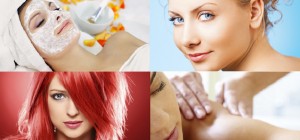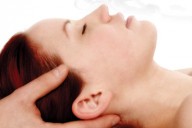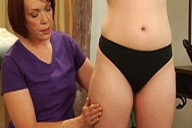Discover 4 Popular Chemical Peels For Medical Aesthetics Training
0Chemical peels are used to treat wrinkles, skin discoloration and scars, typically on the face, neck or hands. A chemical peel is a skin care technique that involves the application of chemical solutions to the skin in a controlled manner to peel away the top layers. The skin that regenerates after the peel is smoother and younger.
A chemical peel can be done alone or in combination with other treatments, like laser and microdermabrasion to diminish the signs of sun damage or acne scarring.
Chemical peels can be done at different depths — light, medium and deep — depending upon the nature of the skin problem to be treated. Each type of chemical peel uses a different chemical solution. Deeper chemical peels produce more dramatic results, but require a longer recovery period. Popular peels include Alpha-Hydroxy Acid Peels, Lactic Acid Peel, Salicylic Acid Peel and Jessner’s Peel.
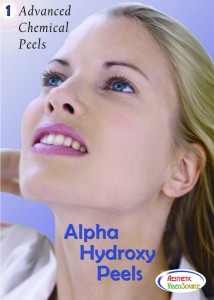 Alpha-Hydroxy Acid Peels
Alpha-Hydroxy Acid Peels
The beauty of alpha-hydroxy acid peels is that they are safe for almost everyone and result in minimal down time for your client. Both glycolic and lactic acid peels are alpha hydroxy acid peels, yet they react very differently with the skin. For example glycolic acid is derived from sugar cane and is corrosive. Glycolic acid penetrates the acid mantle and goes through the inter-cellular matrix to the basal layer. This creates a slow shedding of the epithelial layers and an inflammatory response creating new cell turn over in the epidermis and as new cells rise to the surface old cells will be slough gradually with daily cleansing. In essence, glycolic peels work from the inside out. So typically, with glycolic peels, your clients will see very little surface peeling. Glycolic acid comes in strengths of 20%-70% with pH ranging from 3.5 down to 1.6 for Medical settings. The best glycolic acid will come in a stabilized formula with an aloe Vera carrier and a pH factor ranging from 3.0 to 2.0.
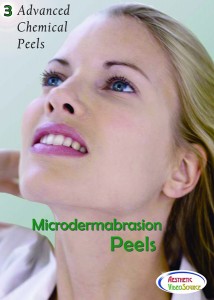 Lactic Acid Peel
Lactic Acid Peel
Lactic acid which is also an AHA is known for its NMF (Natural Moisturizing Factors). Lactic acid peels tend to penetrate the skin slower, softening hardened keratin from the surface down. The result is a plumping of the stratum corneum making it easier to physically exfoliate. So ideally glycolic peels are your best choice for fine lines, wrinkles and sagging skin, while Lactic peels are best for dry, alipidic skin, thickened sun-damaged skin and hyper-pigmentation.
Salicylic Acid Peel
Salicylic acid or Beta peels are hydroxybenzoic acid found in willow bark. Salicylic peels usually come in two strengths of 20% and 30% and a ph of 3.0 to 2.0. Salicylic peels work best for excessively oily skin, retention keratosis, and active acne grades 3 and 4. Salicylic acid peels chemically devour surface lipids and keratin creating more visual sloughing of the stratum corneum than AHA’s. Salicylic peels create a quick inflammatory response in the skin and the client will feel heat ranging from warm flushing to extreme heat. Thus the phrase “melt down peel”. You can help alleviate any discomfort they may have by offering your client a hand held fan.
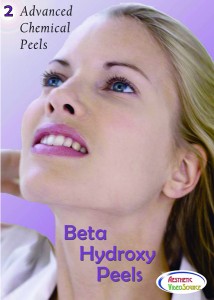 Jessner’s Peel
Jessner’s Peel
Jessner’s peel solution is a combination of three different acids: 14% lactic acid, 14% salicylic acid and 14% resorcinol in a denatured alcohol base. Jessner’s peel is light sensitive due to the resorcinol, so be careful to make sure the lid is closed tight after each use and store away from light. It is difficult to over peel with Jessner’s due to the fact that this peel works primarily in the stratum corneum. Some people can be very sensitive to the resorcinol so it is best to take a patch test several days before the scheduled peel to be safe. Jessner’s creates a lot of heat response or marked vasodilation in the skin. Temporary darkening of the skin can occur due to the resorcinol. Jessner’s can also cause excessive exfoliation which some clients may or may not want. All these symptoms are temporary and subside within 10 to 14 days. If your client has a very compact normal stratum corneum or has recently undergone deeper peels, do not be surprised to have little to no exfoliation. It is possible to perform Jessner’s peels on someone and see no sloughing because of this. So proper skin assessment to determine how much stratum corneum is present is important.
Who Is a Good Candidate For a Chemical Peel?
Clients with fair skin and light hair are a better candidate for chemical peels. Darker skin clients maybe more likely to have an uneven skin tone after the procedure because the newly healed skin will be significantly different from their current skin color.
By understanding these four chemical peel options, you can determine which peel is best for your clients.
Skin care specialists must understand possible side effects and contraindications of chemical peels before performing this procedure.
Do you want to learn more about Advanced Chemical Peels? Aesthetic VideoSource has an excellent chemical peel training series available online or in DVD format which covers all the important information that Estheticians need to understand before performing this treatment. You can see free Chemical Peel Training video clips online. You can also request a FREE catalog online and order Chemical Peel Training DVDs. Free catalogs and DVDs can also be ordered by calling 801-282-2490 or 800-414-2434.
Download your free esthetician success ebook. Learn 8 simple steps to becoming the highest paid esthetician in town.

Learn 8 Simple Steps to Becoming the Highest-Paid Esthetician in Town
Download Your FREE Esthetician Success 20-Page eBook
